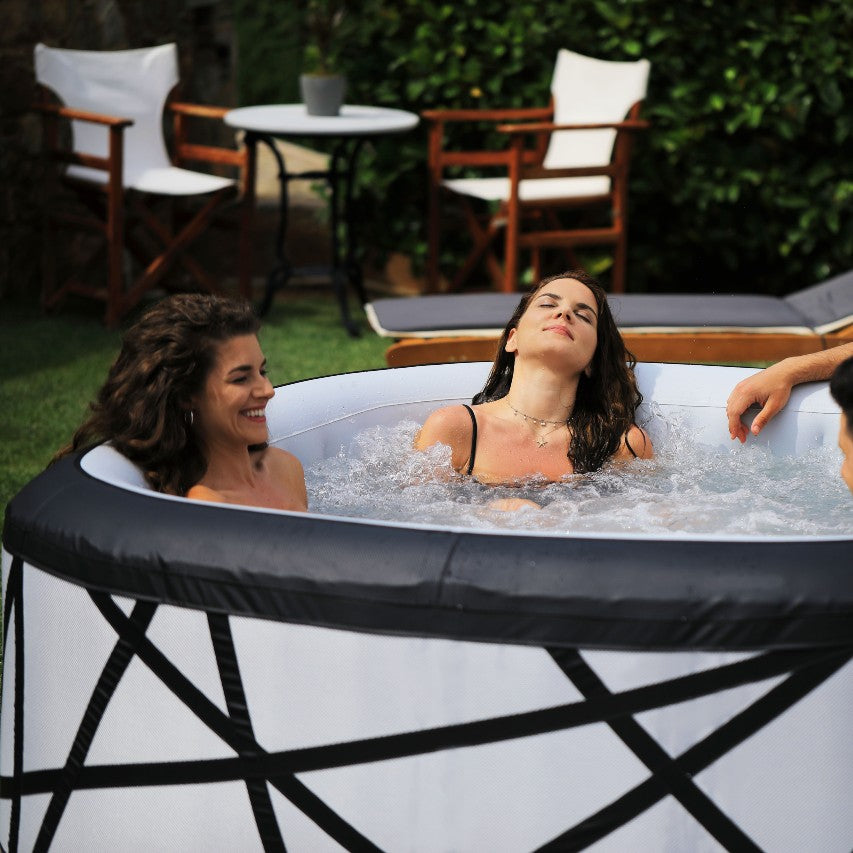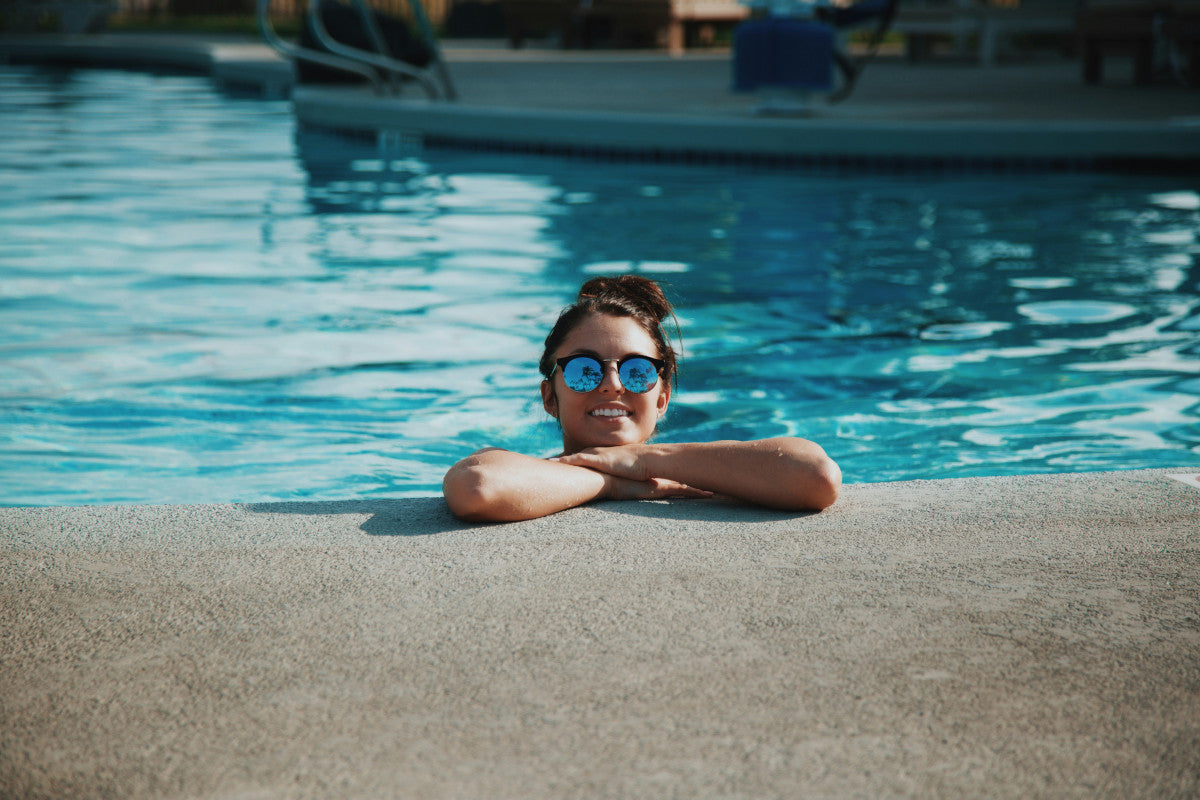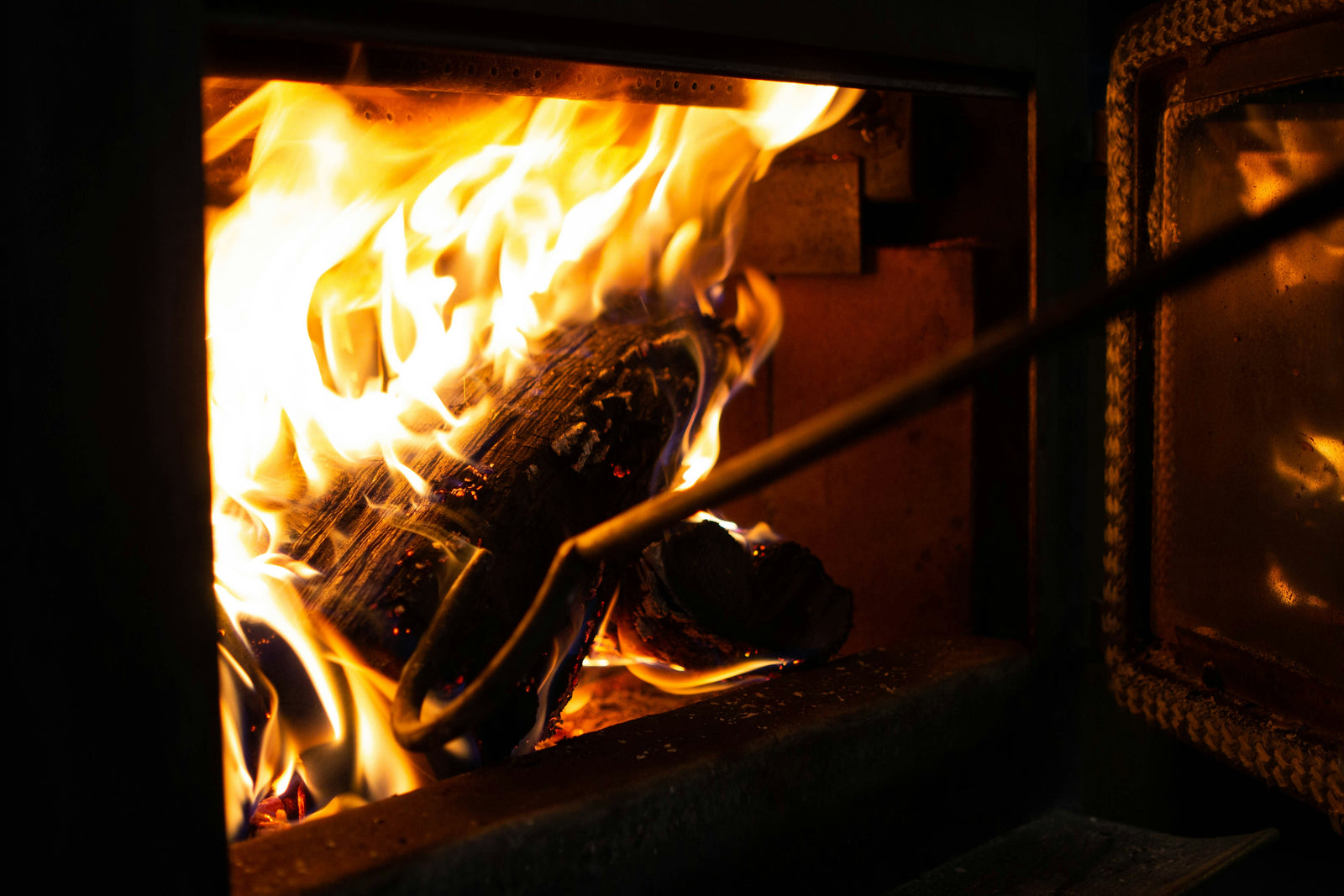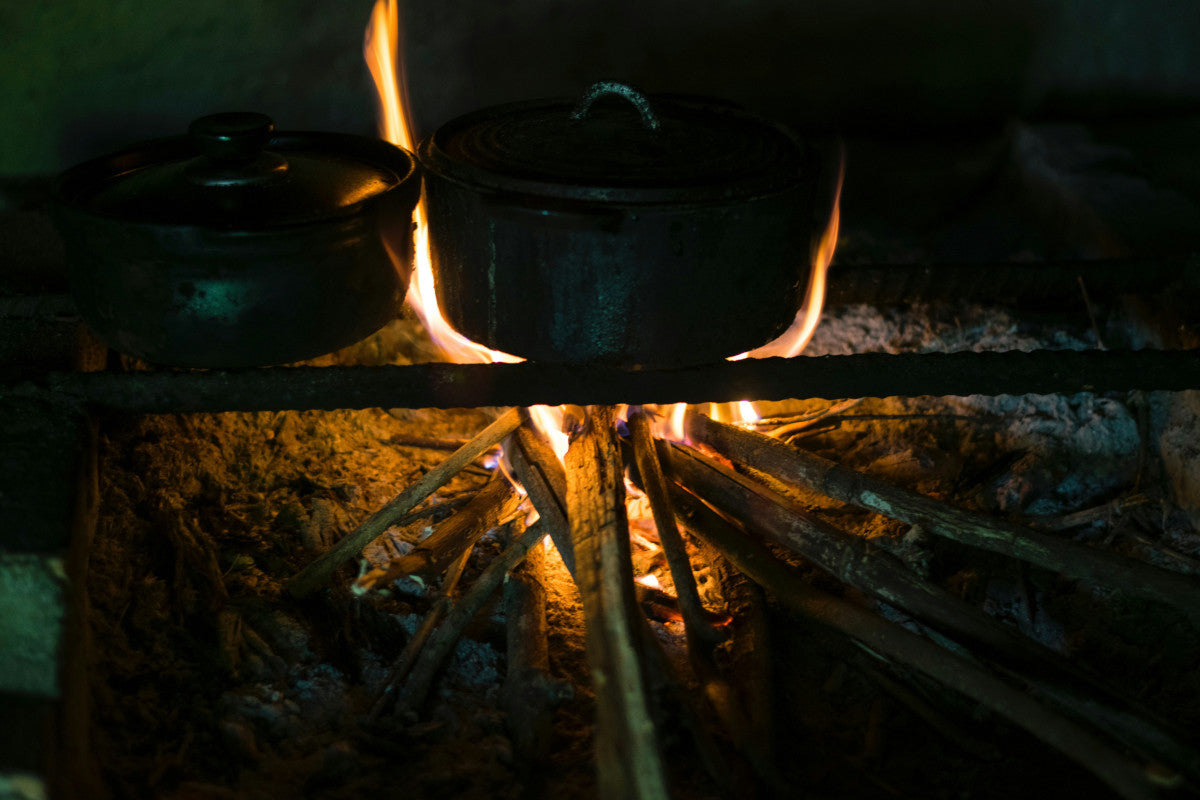Ready to dive into longer swim seasons with your new pool heat pump? Maybe you’ve already found the perfect pool heat pump - but now, it’s time to figure out how to install a pool heater.
This can be a huge source of stress for homeowners, but it doesn’t have to be. Our comprehensive guide on pool heat pump installation will leave you with a clear understanding of your next steps, from selecting the right location to handling electrical connections and ensuring efficient operation.
That being said, installing a pool heat pump yourself is not always the best approach. The technical demands and potential for costly errors make professional installation a wise investment.
So, we encourage you to find a reliable expert in your area to do the heavy lifting for you - so you can kick back, relax, and enjoy an efficient, long-lasting pool heating solution with peace of mind. Start by finding the best pool heat pump at OutdoorDirect today!
Pool Heat Pump Installation Diagram
While we do have a step-by-step guide on how to install a pool heater below, we recognize that many prefer to visualize the process. So, we’ve created this pool heat pump installation diagram for you below:
Can You Install a Pool Heat Pump Yourself?

Before we get into our guide on how to install a pool heat pump it’s important to weigh your options and consider the appeal of professional installation.
Can you install a pool heat pump yourself? Potentially.
Is DIY the best option, though? Probably not.
The Benefits of DIY Pool Heat Pump Installation
One of the main benefits of DIY installation is the potential for cost savings. The pool heat pump cost itself can be well over $5,000, leaving you looking for ways to cut costs elsewhere. You can reduce the overall expense of the project by avoiding professional labor fees.
Managing the installation process yourself means you have complete control over the timeline and the details of the project, allowing you to work at your own pace and make decisions that best suit your specific situation. If you want to get a pool heat pump installed in the peak swimming season you may end up waiting a while for an expert to schedule you in.
Of course, there’s also the appeal of learning a new skill set and the fulfillment that comes with doing something challenging all on your own.
Installing a pool heat pump DIY provides an opportunity to gain a deeper understanding of your pool's heating system, from the mechanics of the heat pump to the intricacies of your pool’s plumbing and electrical systems.
That being said, it’s important to look at the other side of the coin too…

Challenges Associated With Installing a Pool Heat Pump
Pool heat pumps involve complex electrical, plumbing, and HVAC systems. Successful installation requires a thorough understanding of these components, along with local building codes and regulations.
This is the biggest issue for homeowners - there are so many moving parts here, and things could quickly go wrong. Mistakes are costly, including poor performance of your pump, increased energy consumption, or even damage to the system itself.
This means not only are you not getting the full capabilities of your pump but you could end up dealing with premature failure and replacement. Errors in the installation process could void your warranty, too.
But most importantly, working with electrical and plumbing systems presents risks from a safety standpoint. Inappropriate handling or incorrect installation can result in accidents or long-term safety hazards, both for the installer and the pool users.
Why Professional Installation is Your Best Bet
In the end, the vast majority of homeowners should avoid DIY pool heater installation and opt for the help of professionals instead. These experts are familiar with the nuances of different models and brands, ensuring that your heat pump is installed correctly and efficiently.
This will also ensure that your warranty remains valid, providing protection against potential future problems. But ultimately, you’re paying for peace of mind.
Knowing that your heat pump is installed correctly allows you to enjoy its benefits fully without worrying about the potential pitfalls of a DIY approach. You can’t put a price tag on that!
Still, if you’re committed to learning how to install a pool heat pump or simply want to see what goes on behind the scenes, we’ll walk you through the process below.
How to Install a Pool Heat Pump: Step-by-Step Guide

From figuring out where to place your pump to handling wiring and commissioning the pump, we’ll cover everything you need to know about pool heat pump installation below - starting with choosing the right heat pump for your specific pool!
Choosing the Right Pool Heat Pump
If you’ve already picked your pump and just need advice on installing it, go ahead and skip down to the next section. Otherwise, consider these factors when choosing your pool heater:
- Pool Size and Volume: Calculate the volume of your pool to determine the BTU (British Thermal Units) rating needed for your heat pump. A larger pool requires a heat pump with a higher BTU rating to heat the water effectively. Our guide on pool heat pump sizing will help you choose wisely.
- Climate: Your local climate influences the efficiency of a heat pump. In cooler regions, you'll need a heat pump with a higher performance rating to operate effectively.
- Energy Efficiency: Look for models with a high Coefficient of Performance (COP). The higher the COP, the more efficient the heat pump.
- Features and Brand Reputation: Consider heat pumps with additional features like digital controls, quiet operation, and compatibility with smart home systems. Research brands for reliability and customer service - we have a comparison of AquaCal vs Hayward heat pump and AquaCal vs Pentair heat pump if you’re looking for insight.
Speaking of AquaCal, this manufacturer has been known as the #1 choice for pool heating solutions since 1981. OutdoorDirect is proud to offer the entire lineup of AquaCal pool heat pumps, whether you need a small pool heat pump or a commercial pool heat pump.
With industry-leading 7 year warranties, world-class customer service, and smart features that give you unprecedented control, we encourage you to consider either the AquaCal HeatWave SuperQuiet Heat Pump or the AquaCal TropiCal Heat Pump series.
The HeatWave SuperQuiet series represents the pinnacle in pool heating, with unparalleled efficiency and longevity thanks to the Patented ThermoLink Titanium Heat Exchanger. It also boasts a corrosion-proof cabinet for added durability. And as the name suggests, these units are as quiet as it gets.
On the other hand, the TropiCal series offers exceptional performance at a more affordable price point. These units may be more affordable but they don’t compromise on efficiency or reliability - they can easily last up to 15 years with proper installation!
Both units are easy to control and PoolSync Ready, so you can heat your pool directly from your smartphone. We have customer service representatives on standby to help you choose the right pump, or, take our quiz below to find the right solution in just a few clicks.
Pre-Installation Preparation
With your pool heat pump selected it’s time to take a few preparatory steps that will ensure a smooth installation process:
- Site Inspection: Check the installation site for proper drainage, stability, and access for maintenance. The ground should be level and strong enough to support the heat pump’s weight.
- Tools and Equipment: Gather the necessary tools, including screwdrivers, wrenches, electrical supplies, plumbing materials, and safety gear.
- Permits and Regulations: Verify local building codes and obtain necessary permits. Ensure the installation complies with electrical and plumbing standards.
Where is the Best Place to Install a Heat Pump in a Pool?
This is one of the most important considerations, as it will influence the longevity and efficiency of your heating solution.
Ideally, the heat pump should be close to the pool to minimize heat loss in the piping. However, it should not be so close as to be affected by splashed water or chemicals. There’s a fine line between too close and too far.
Airflow plays a part here as well. The heat pump needs sufficient space around it to ensure adequate air intake and exhaust. Poor airflow can reduce efficiency and lead to overheating.
Think about the amount of sunlight exposure the pump will get as well, especially if you aren’t housing it within a separate cabinet or shed. While direct sunlight can improve efficiency slightly, too much exposure can cause the unit to overheat.
Finally, think about your level of access to the pump. Yes, you want it out of sight and out of mind - but you need to be able to get to it for maintenance and repairs. Walk around your yard and think about where exactly offers the best balance of all these factors.
How Far Does a Pool Heat Pump Need to Be From the House?

In choosing the best place to install a heat pump in a pool you should also consider proximity to your house. The reason is that heat pumps can generate noise, which could be disruptive if too close to living spaces.
Check the manufacturer’s guidelines for noise levels to determine an appropriate distance. This won’t be as much of a concern if you invest in the silent operation of a HeatWave SuperQuiet unit.
Local building codes may specify minimum distance requirements from the house, property lines, or other structures. Typically, a heat pump should be at least 5 feet away from the house to ensure safety and compliance.
Navigating the Installation Process
Now, it’s time to actually learn how to install a pool heat pump. As we said from the start, professional pool heat pump installation is well worth the investment, if not for the improved efficiency and longevity, for the peace of mind. That being said, here’s an overview of the process:
- Foundation Preparation: Create a stable, level foundation for the heat pump, typically a concrete pad or compacted gravel base. The foundation should be large enough to accommodate the heat pump and allow for drainage.
- Positioning the Heat Pump: Carefully place the heat pump on the foundation, maintaining the recommended distance from the house and ensuring there’s ample space around it for air circulation and maintenance.
- Connecting Plumbing: Connect the heat pump to the pool’s circulation system. This usually involves integrating PVC pipes from the pool’s filter output to the heat pump and then back to the pool. Use valves to control the flow and make future servicing easier. Ensure all connections are tight and sealed to prevent leaks.
- Electrical Wiring: This step should be performed by a licensed electrician to comply with local codes and ensure safety. The electrician will connect the heat pump to the power supply, ensuring it has a dedicated circuit. Grounding the heat pump is crucial to prevent electrical hazards.
- Checking the Installation: Before starting the heat pump, check all connections for leaks and ensure the electrical wiring is properly insulated and secured.
Testing and Commissioning
At this point, you’re ready to put your work to the test. Start up your heat pump following manufacturer guidelines, watching out for unusual noises or vibrations.
Check the flow of water through the heat pump to ensure it’s within the manufacturer’s recommended range. Adjust the valves as necessary to achieve proper flow.
Set the desired temperature on the heat pump’s thermostat and observe the heating process. Ensure the heat pump achieves and maintains the set temperature efficiently.
Let the heat pump run for a continuous cycle to ensure it operates smoothly without interruptions or fluctuations in performance.
Maintenance Tips
While the work of actually installing a pool heat pump is complete, you should conduct ongoing maintenance to ensure your unit runs smoothly for years to come. You can handle this yourself, or again, leverage the expertise of a professional.
One thing you can definitely take on is routine cleaning, though. Keep the exterior of the heat pump clean of debris, leaves, and dust to ensure the airflow is unobstructed. Clean or replace filters regularly to maintain optimal airflow and water circulation.
You should also regularly inspect plumbing connections and the heat pump itself for any signs of leakage. It’s worth investing in an annual check-up with a professional to inspect the heat pump’s components, refrigerant levels, and overall operation.
If necessary, follow the manufacturer’s instructions for winterizing the heat pump to prevent damage during cold weather. And that’s it - you can now enjoy a warmer pool and an extended swimming season!

Parting Thoughts on Pool Heat Pump Installation
As we conclude our guide on how to install a pool heat pump, remember that the process involves careful planning, from selecting the right unit to ensuring proper placement and secure connections.
Because successful pool heat pump installation enhances efficiency, extends equipment life, and provides reliable pool heating, it’s always worth investing in professional expertise. This guarantees safety and preserves your warranty.
Our blog has more resources on topics like how long to heat a pool, should you leave your pool heat pump on all the time, and choosing between a pool heat pump vs gas heater.
Whether you’re looking for an above-ground pool heat pump, a pool heater chiller combo, or even just an AquaCal chiller to keep your pool comfortable amidst the blazing summer heat, remember that OutdoorDirect is your trusted provider.
So, what are you waiting for? Explore our premium selection from the most trusted brand in the industry and enjoy an extended swimming season.








